


Xochimilco
Whose meaning is “chinampas de Flores” or “flower field” is located in the southeast of the Mexican capital. This ancient pre-Hispanic neighborhood was one of the most important suppliers of food and merchandise in Mesoamerica. Because it is surrounded by canals and banks, people traveled through a type of canoes called chinampas, which from then until today, are one of the most emblematic distinctive features of the place.
In the territory, now immersed in the urban dynamics of Mexico City, there live fourteen native towns that preserve traditions inherited from remote times. With the purpose of contributing to the conservation of the lake environment, UNESCO proclaimed the chinampas of Xochimilco as cultural heritage of Humanity in 1987. Currently there are programs to prevent the ecological deterioration of the canals that contemplate the preservation of the axolotl and various plant species.
Coyoacán
It is one of the most colorful and representative spaces in Mexico City. This “place of coyotes” has witnessed a long history with pre-Hispanic and colonial origins. The conqueror Hernán Cortés lived in the center, where battles were fought in search of independence from the Spanish crown and important Catholic temples were erected. In the 20th century it housed important figures in politics and art, such as Leon Trotsky, Frida Kahlo and Diego Rivera. Its streets, alleys, mansions, squares, cafes, restaurants, museums and galleries give this place a unique spirit in the country.
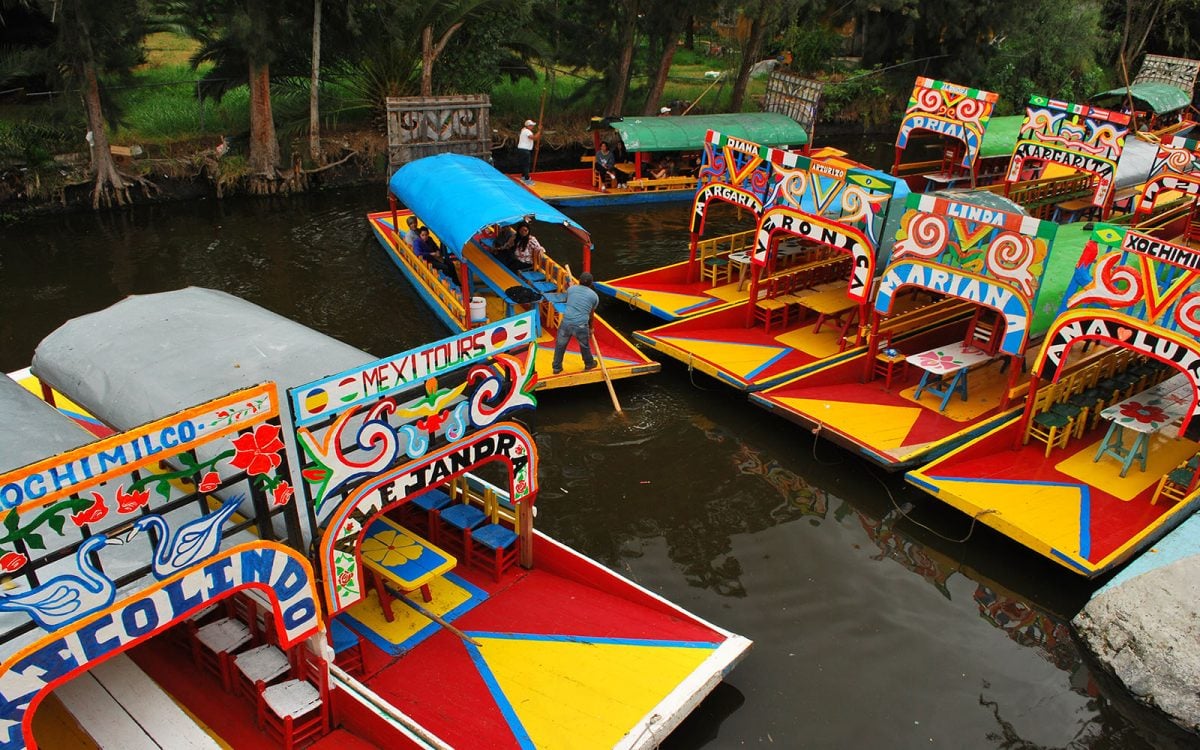
Includes:
Does not include:
Cost per person USD 72.00
Teotihuacan
This “city where men become gods”, located just 42 km from Mexico City, was, for centuries, the largest and most linked in ancient Mesoamerica. It preserves important ritual buildings such as the Pyramid of the Sun, the Pyramid of the Moon or the Temple of Quetzalcatl. New excavations have revealed knowledge about its inhabitants, their beliefs and their way of life, so on this visit it will guide us; a group of expert archaeologists on site to tell us about the finds and their meaning.
Basílica of Guadalupe
North of Mexico City is the second most venerated and visited Catholic site in the world after St. Peter's Basilica, in the Vatican: the Basilica of Santa María de Guadalupe. This sanctuary dedicated to the Virgin Mary in her invocation of Guadalupe, promotes the faith of millions of people who every year attend religious services, or to contemplate the image of the Virgin that, for miraculous work, it was printed on the “ayate” of the indigenous Juan Diego to testify to its existence and promote the Catholic faith among the recently conquered native peoples. Due to the large influx of visitors and the state of conservation of the first temple, a new church was built on the same site.
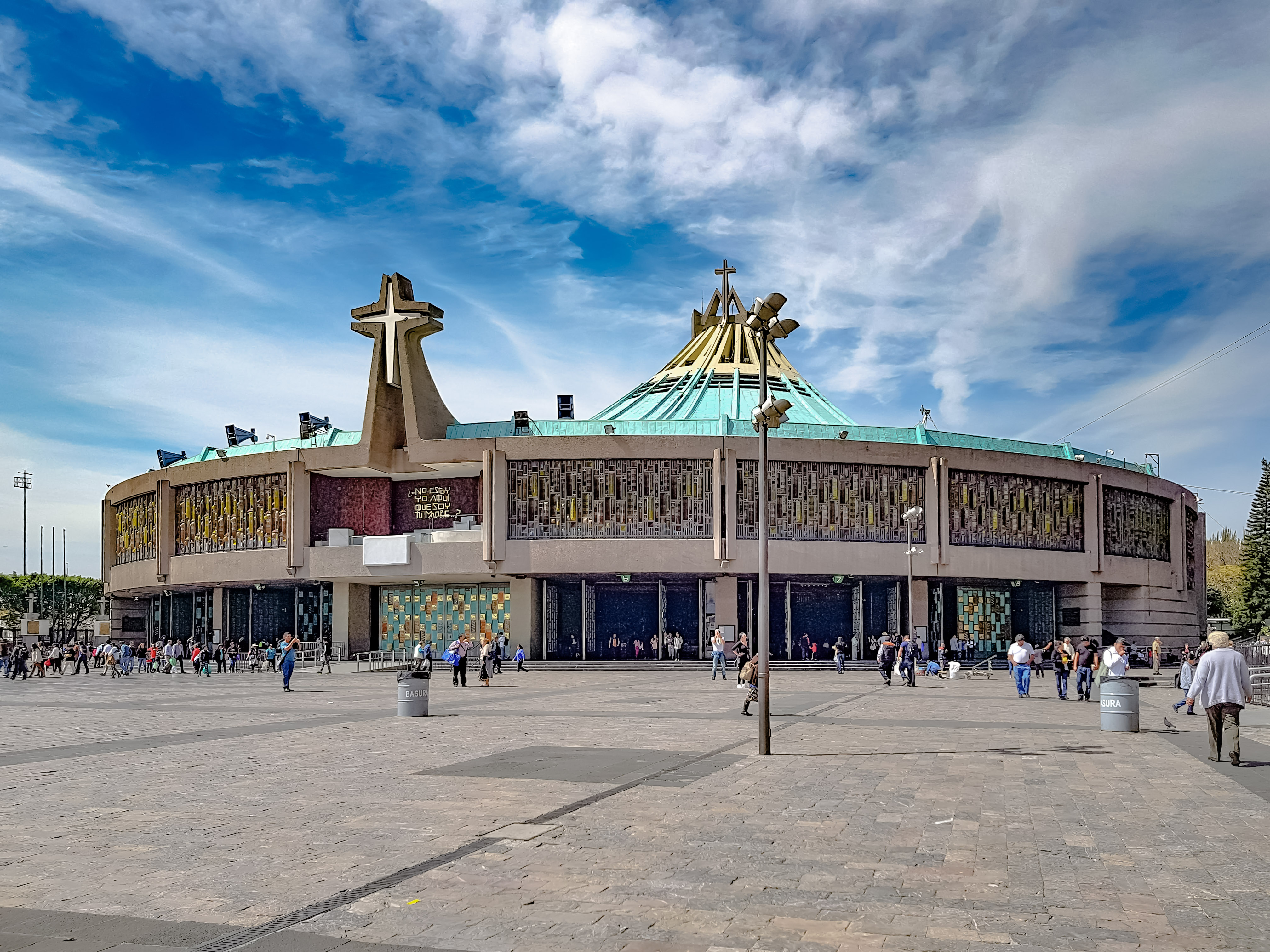
Includes:
Does not include:
Cost per person USD 77.00
The private and family collection was founded by Ana Chávez Ortiz and Ana Prieto Chávez, daughter and granddaughter of Master Carlos Chávez, respectively. The Collection was formed to promote and disseminate his father's musical legacy so that scholars from various areas would have access to materials that, although of a personal nature, do not correspond to public archives.
Over the years, the Collection has been directed by the author's heirs; currently, it is represented by Jana Angulo Prieto, the composer's great-granddaughter.
As part of their activities, together with their work team, they have taken on the task of collecting existing material related to the works of Carlos Chávez, classifying it and systematizing its use to form a virtual archive that, subsequently, is susceptible to consultation for anyone interested in studying the life and work of Carlos Chávez.
To do this, we work cooperatively with experts from other areas of culture.
For the above reasons, it is crucial for the Carlos Chávez Ramírez Private Collection to be in contact with those who work to disseminate music, documentary repositories, and museum activities.
The intention is that they know the materials that the family safeguards for their exploration, consultation, and incorporation into their academic research.
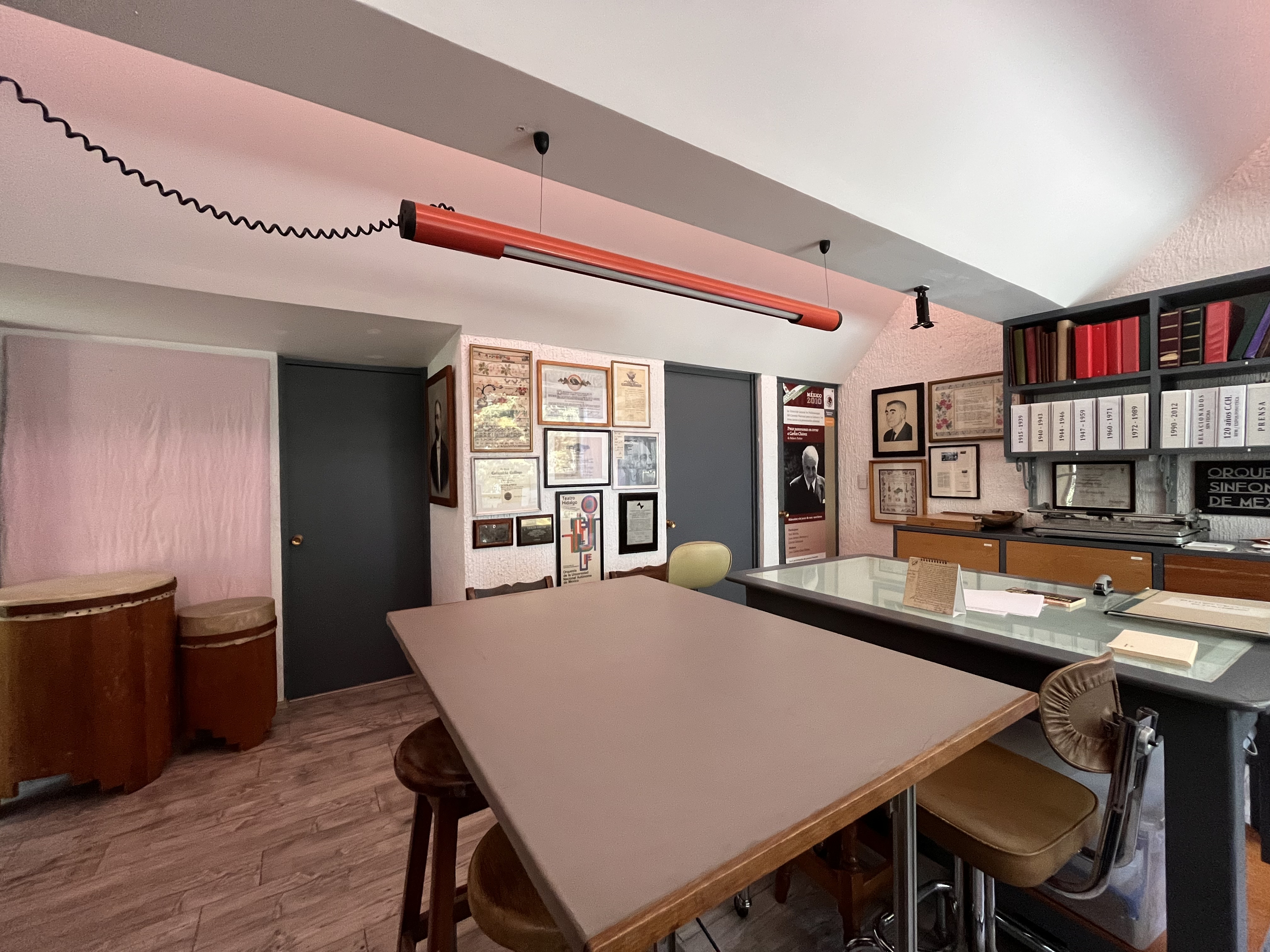
Includes:
No Includes:
Cost per person USD 20.00
Oaxaca City
The State of Oaxaca is located 462 km from the country's capital. It is one of the places with the greatest natural and cultural wealth in Mexico, and its capital, Oaxaca City, currently stands out for being one of the most important artistic and cultural centers internationally. Its immeasurable natural, material and intangible heritage can be seen in every corner, but on this occasion we will have the opportunity to get to know the center of the State capital, where archaeological vestiges, colonial monuments, architecture of independent Mexico, museums and galleries are preserved. contemporary, as well as an unmatched diversity of expressions and people. Its traditional food and drinks have attracted visitors from all over the world. Its rich musical heritage is preserved in the old convents, churches and parishes, as well as its streets, squares and civil precincts.
One of the enormous riches of the state is the vast amount of tubular organs manufactured and used, especially during the three colonial centuries of Mexico's history. Among them, the church of San Jerónimo Tlacochahuaya stands out, which has an indivisible aesthetic and acoustic relationship with the temple. At this site we will listen to a concert with the baroque organ and enjoy an evening with the people of the community.
Monte Albán
This archaeological site is located just 10 km from the city of Oaxaca. For centuries it was the seat of dominant power in the region of the Central Valleys of Oaxaca, and since its foundation it was characterized by being a multi-ethnic community. During his occupation he maintained strong ties with other peoples of great importance in Mesoamerica, especially with the Teotihuacanos, located in the center of the country. Currently, the buildings, squares, mural paintings and various objects associated with the populations that settled there are preserved, revealing the cultural wealth and prosperity of this area of the country.
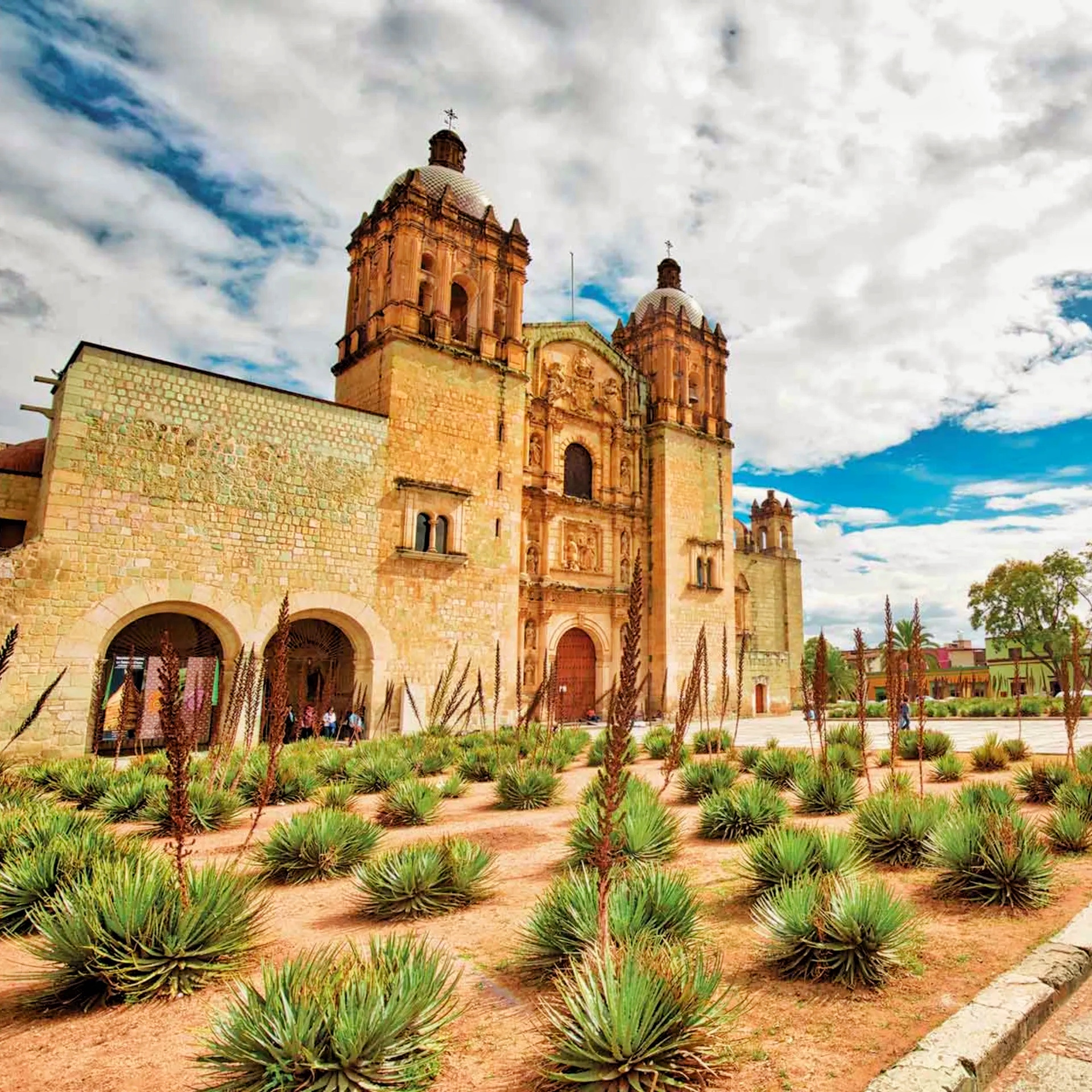
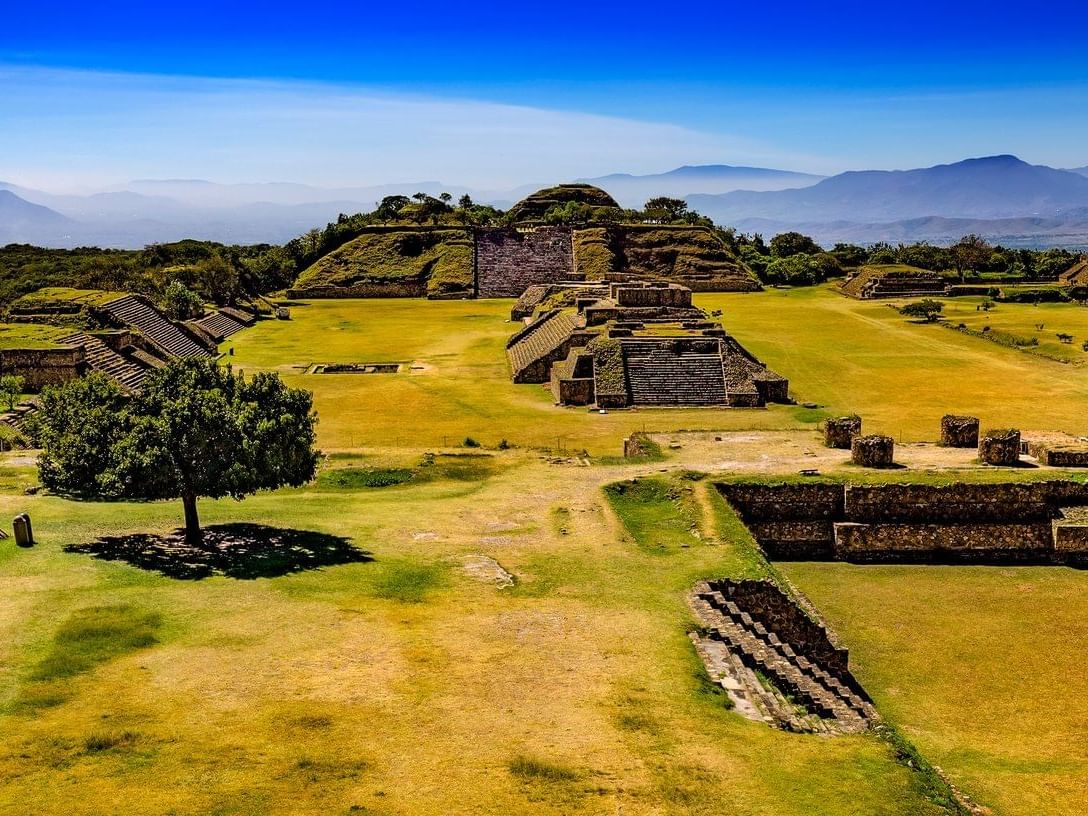
Includes:
No Includes:
Misión de los Ángeles Hotel
Cost per person in a double room USD 440.00
Cost per person in a single room USD 556.00
Cost per additional night pre/post Congress (includes breakfast, does not include transfers)
Double room USD 104.00
Single room USD 184.00
September 13th. Departure 7:00 am. Arrival in Oaxaca
September 14th Visit to Monte Albán
September 15th Return to Mexico City approximately 10:00 am
Xochimilco
Whose meaning is “chinampas de Flores” or “flower field” is located in the southeast of the Mexican capital. This ancient pre-Hispanic neighborhood was one of the most important suppliers of food and merchandise in Mesoamerica. Because it is surrounded by canals and banks, people traveled through a type of canoes called chinampas, which from then until today, are one of the most emblematic distinctive features of the place.
In the territory, now immersed in the urban dynamics of Mexico City, there live fourteen native towns that preserve traditions inherited from remote times. With the purpose of contributing to the conservation of the lake environment, UNESCO proclaimed the chinampas of Xochimilco as cultural heritage of Humanity in 1987. Currently there are programs to prevent the ecological deterioration of the canals that contemplate the preservation of the axolotl and various plant species.
Coyoacán
It is one of the most colorful and representative spaces in Mexico City. This “place of coyotes” has witnessed a long history with pre-Hispanic and colonial origins. The conqueror Hernán Cortés lived in the center, where battles were fought in search of independence from the Spanish crown and important Catholic temples were erected. In the 20th century it housed important figures in politics and art, such as Leon Trotsky, Frida Kahlo and Diego Rivera. Its streets, alleys, mansions, squares, cafes, restaurants, museums and galleries give this place a unique spirit in the country.

Includes:
No Includes:
Cost per person USD 72.00
Teotihuacan
This “city where men become gods”, located just 42 km from Mexico City, was, for centuries, the largest and most linked in ancient Mesoamerica. It preserves important ritual buildings such as the Pyramid of the Sun, the Pyramid of the Moon or the Temple of Quetzalcatl. New excavations have revealed knowledge about its inhabitants, their beliefs and their way of life, so on this visit it will guide us; a group of expert archaeologists on site to tell us about the finds and their meaning.
Basílica of Guadalupe
North of Mexico City is the second most venerated and visited Catholic site in the world after St. Peter's Basilica, in the Vatican: the Basilica of Santa María de Guadalupe. This sanctuary dedicated to the Virgin Mary in her invocation of Guadalupe, promotes the faith of millions of people who every year attend religious services, or to contemplate the image of the Virgin that, for miraculous work, it was printed on the “ayate” of the indigenous Juan Diego to testify to its existence and promote the Catholic faith among the recently conquered native peoples. Due to the large influx of visitors and the state of conservation of the first temple, a new church was built on the same site.

Includes:
No Includes:
Cost per person USD 77.00
The private and family collection was founded by Ana Chávez Ortiz and Ana Prieto Chávez, daughter and granddaughter of Master Carlos Chávez, respectively. The collection was formed with the purpose of promoting and disseminating his father's musical legacy and for scholars from various areas to have access to materials that, although personal, do not correspond to public archives. Over the years the Collection has been directed by the author's heirs and is currently represented by Jana Angulo Prieto, the composer's great-granddaughter.
As part of their activities, together with their work team, they have taken on the task of collecting the existing material related to the works of Carlos Chávez, classifying it and systematizing its use with the purpose of forming a virtual archive that, later, will be susceptible to consultation for anyone interested in studying the life and work of Carlos Chávez. For this, we work cooperatively with experts from other areas of culture.
For the above reasons, for the Carlos Chávez Ramírez Private Collection it is very important to be in contact with those people who work for the dissemination of music, documentary repositories and museum activities, with the intention of making them aware of the materials that the family safeguards, for exploration, consultation and incorporation into your academic research.

Includes:
No Includes:
Cost per person USD 20.00
Oaxaca City
The State of Oaxaca is located 462 km from the country's capital. It is one of the places with the greatest natural and cultural wealth in Mexico, and its capital, Oaxaca City, currently stands out for being one of the most important artistic and cultural centers internationally. Its immeasurable natural, material and intangible heritage can be seen in every corner, but on this occasion we will have the opportunity to get to know the center of the State capital, where archaeological vestiges, colonial monuments, architecture of independent Mexico, museums and galleries are preserved. contemporary, as well as an unmatched diversity of expressions and people. Its traditional food and drinks have attracted visitors from all over the world. Its rich musical heritage is preserved in the old convents, churches and parishes, as well as its streets, squares and civil precincts.
One of the enormous riches of the state is the vast amount of tubular organs manufactured and used, especially during the three colonial centuries of Mexico's history. Among them, the church of San Jerónimo Tlacochahuaya stands out, which has an indivisible aesthetic and acoustic relationship with the temple. At this site we will listen to a concert with the baroque organ and enjoy an evening with the people of the community.
Monte Albán
This archaeological site is located just 10 km from the city of Oaxaca. For centuries it was the seat of dominant power in the region of the Central Valleys of Oaxaca, and since its foundation it was characterized by being a multi-ethnic community. During his occupation he maintained strong ties with other peoples of great importance in Mesoamerica, especially with the Teotihuacanos, located in the center of the country. Currently, the buildings, squares, mural paintings and various objects associated with the populations that settled there are preserved, revealing the cultural wealth and prosperity of this area of the country.

Includes:
No Includes:
Misión de los Ángeles Hotel
Cost per person in a double room USD 440.00
Cost per person in a single room USD 556.00
Cost per additional night pre/post Congress (includes breakfast, does not include transfers)
Double room USD 104.00
Single room USD 184.00
September 13th. Departure 7:00 am. Arrival in Oaxaca
September 14th Visit to Monte Albán
September 15th Return to Mexico City approximately 10:00 am
Xochimilco
Whose meaning is “chinampas de Flores” or “flower field” is located in the southeast of the Mexican capital. This ancient pre-Hispanic neighborhood was one of the most important suppliers of food and merchandise in Mesoamerica. Because it is surrounded by canals and banks, people traveled through a type of canoes called chinampas, which from then until today, are one of the most emblematic distinctive features of the place.
In the territory, now immersed in the urban dynamics of Mexico City, there live fourteen native towns that preserve traditions inherited from remote times. With the purpose of contributing to the conservation of the lake environment, UNESCO proclaimed the chinampas of Xochimilco as cultural heritage of Humanity in 1987. Currently there are programs to prevent the ecological deterioration of the canals that contemplate the preservation of the axolotl and various plant species.
Coyoacán
It is one of the most colorful and representative spaces in Mexico City. This “place of coyotes” has witnessed a long history with pre-Hispanic and colonial origins. The conqueror Hernán Cortés lived in the center, where battles were fought in search of independence from the Spanish crown and important Catholic temples were erected. In the 20th century it housed important figures in politics and art, such as Leon Trotsky, Frida Kahlo and Diego Rivera. Its streets, alleys, mansions, squares, cafes, restaurants, museums and galleries give this place a unique spirit in the country.

Includes:
No Includes:
Cost per person USD 72.00
Teotihuacan
This “city where men become gods”, located just 42 km from Mexico City, was, for centuries, the largest and most linked in ancient Mesoamerica. It preserves important ritual buildings such as the Pyramid of the Sun, the Pyramid of the Moon or the Temple of Quetzalcatl. New excavations have revealed knowledge about its inhabitants, their beliefs and their way of life, so on this visit it will guide us; a group of expert archaeologists on site to tell us about the finds and their meaning.
Basílica of Guadalupe
North of Mexico City is the second most venerated and visited Catholic site in the world after St. Peter's Basilica, in the Vatican: the Basilica of Santa María de Guadalupe. This sanctuary dedicated to the Virgin Mary in her invocation of Guadalupe, promotes the faith of millions of people who every year attend religious services, or to contemplate the image of the Virgin that, for miraculous work, it was printed on the “ayate” of the indigenous Juan Diego to testify to its existence and promote the Catholic faith among the recently conquered native peoples. Due to the large influx of visitors and the state of conservation of the first temple, a new church was built on the same site.

Includes:
No Includes:
Cost per person USD 77.00
The private and family collection was founded by Ana Chávez Ortiz and Ana Prieto Chávez, daughter and granddaughter of Master Carlos Chávez, respectively. The collection was formed with the purpose of promoting and disseminating his father's musical legacy and for scholars from various areas to have access to materials that, although personal, do not correspond to public archives. Over the years the Collection has been directed by the author's heirs and is currently represented by Jana Angulo Prieto, the composer's great-granddaughter.
As part of their activities, together with their work team, they have taken on the task of collecting the existing material related to the works of Carlos Chávez, classifying it and systematizing its use with the purpose of forming a virtual archive that, later, will be susceptible to consultation for anyone interested in studying the life and work of Carlos Chávez. For this, we work cooperatively with experts from other areas of culture.
For the above reasons, for the Carlos Chávez Ramírez Private Collection it is very important to be in contact with those people who work for the dissemination of music, documentary repositories and museum activities, with the intention of making them aware of the materials that the family safeguards, for exploration, consultation and incorporation into your academic research.

Includes:
No Includes:
Cost per person USD 20.00
Ciudad de Oaxaca
The State of Oaxaca is located 462 km from the country's capital. It is one of the places with the greatest natural and cultural wealth in Mexico, and its capital, Oaxaca City, currently stands out for being one of the most important artistic and cultural centers internationally. Its immeasurable natural, material and intangible heritage can be seen in every corner, but on this occasion we will have the opportunity to get to know the center of the State capital, where archaeological vestiges, colonial monuments, architecture of independent Mexico, museums and galleries are preserved. contemporary, as well as an unmatched diversity of expressions and people. Its traditional food and drinks have attracted visitors from all over the world. Its rich musical heritage is preserved in the old convents, churches and parishes, as well as its streets, squares and civil precincts.
One of the enormous riches of the state is the vast amount of tubular organs manufactured and used, especially during the three colonial centuries of Mexico's history. Among them, the church of San Jerónimo Tlacochahuaya stands out, which has an indivisible aesthetic and acoustic relationship with the temple. At this site we will listen to a concert with the baroque organ and enjoy an evening with the people of the community.
Monte Albán
This archaeological site is located just 10 km from the city of Oaxaca. For centuries it was the seat of dominant power in the region of the Central Valleys of Oaxaca, and since its foundation it was characterized by being a multi-ethnic community. During his occupation he maintained strong ties with other peoples of great importance in Mesoamerica, especially with the Teotihuacanos, located in the center of the country. Currently, the buildings, squares, mural paintings and various objects associated with the populations that settled there are preserved, revealing the cultural wealth and prosperity of this area of the country.

Includes:
No Includes:
Misión de los Ángeles Hotel
Cost per person in a double room USD 440.00
Cost per person in a single room USD 556.00
Cost per additional night pre/post Congress (includes breakfast, does not include transfers)
Double room USD 104.00
Single room USD 184.00
September 13th. Departure 7:00 am. Arrival in Oaxaca
September 14th Visit to Monte Albán
September 15th Return to Mexico City approximately 10:00 am